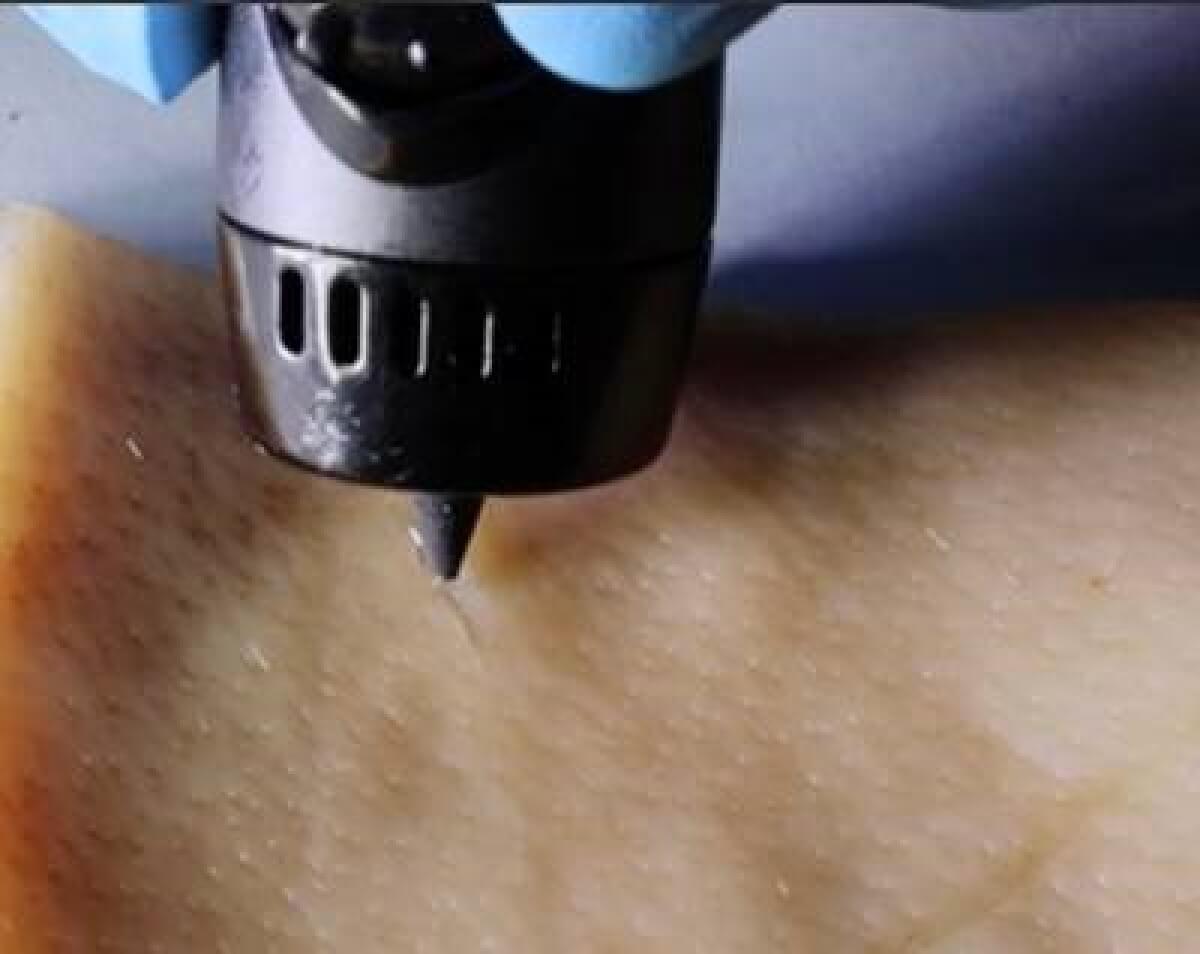
This 3D-printing pen is painting a gel that can help wounds of all shapes heal quickly and effectively. Adapted from ACS Applied Materials & Interfaces, 2023, DOI: 10.1021/acsami.3c03630
NANJING, China — The body has an incredible ability to heal itself, but sometimes wounds require a little extra help. Now, scientists say they have developed a revolutionary ink that can actively boost the body's healing processes. Using a 3D-printing pen, this wound-healing ink, known as PAINT (portable bioactive ink for tissue healing), delivers immune system vesicles to the cut, promoting faster and more efficient healing.
When our skin is injured, the body's natural healing mechanisms kick in, working tirelessly to repair the damage. While bandages and stitches can aid the process, they can't actively accelerate it. That's where PAINT comes in. By incorporating white blood cells and extracellular vesicles (EVs) into a hydrogel-based ink, the researchers were able to create a powerful healing tool. These EVs play a vital role in promoting blood vessel formation and reducing inflammation during the healing process.
Using the 3D-printing pen, the PAINT ink is applied directly to the wound. The ink, composed of EVs secreted from macrophages and sodium alginate, quickly forms a sturdy gel at the site of the injury. In human epithelial cells, the EVs in PAINT were shown to promote blood vessel formation and reduce inflammatory markers, facilitating the growth phase of healing. According to a media release, the PAINT ink significantly accelerated the formation of collagen fibers, a crucial component of wound healing. Mice treated with PAINT showed remarkable progress, with large wounds nearly healed after just 12 days.

This breakthrough technology has the potential to revolutionize wound healing, making it faster and easier. Complex procedures may no longer be necessary, as PAINT offers a simple yet effective solution. The researchers envision that PAINT could be used to treat a wide range of cuts and wounds, enabling quick and efficient healing without complications.
The study was supported by various funding sources, including the Leading-Edge Technology Program of Jiangsu Natural Science Foundation, the Natural Science Foundation, the Natural Science Foundation of Jiangsu Province, and more.
The study is published in the journal ACS Applied Materials & Interfaces.










